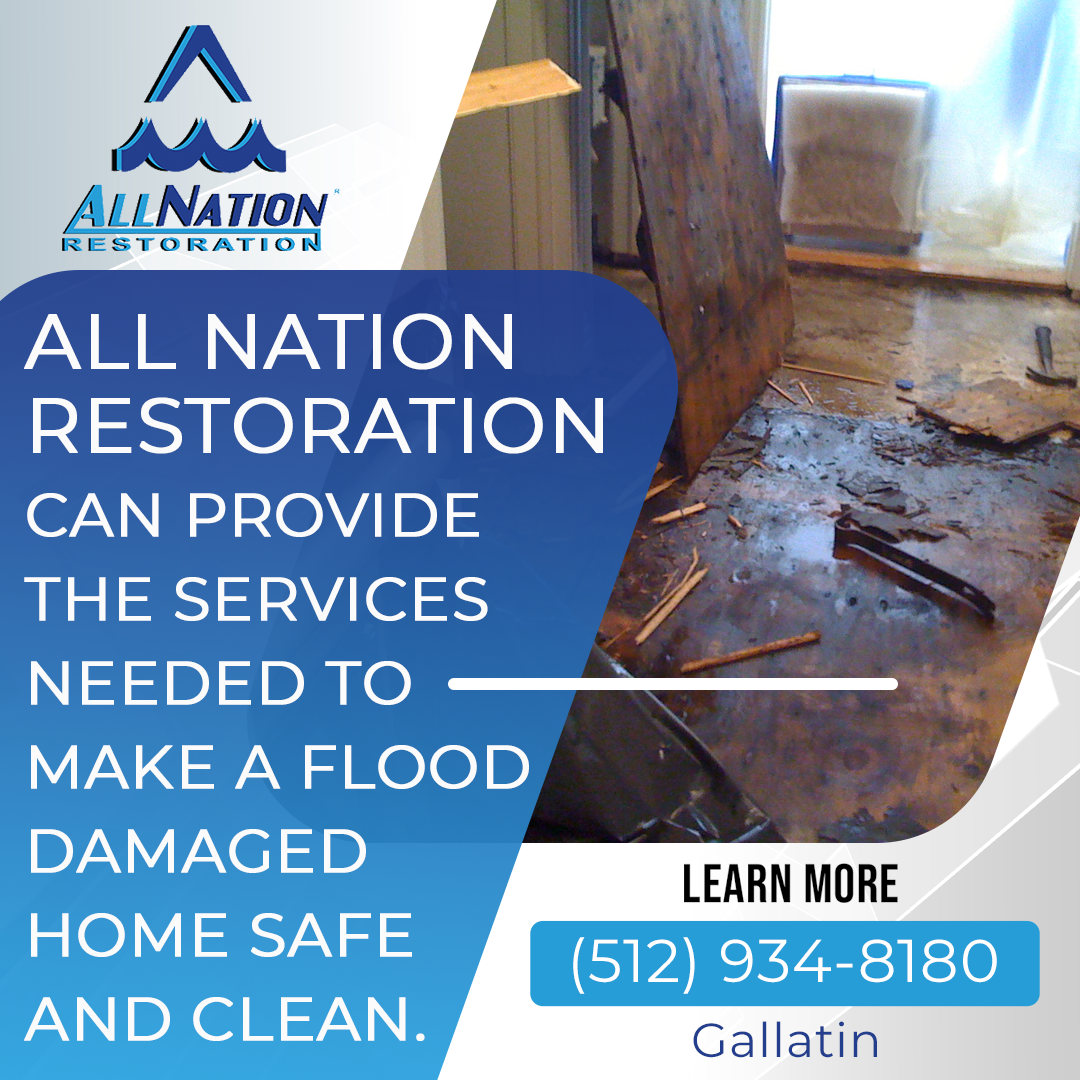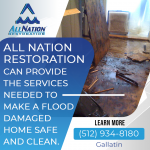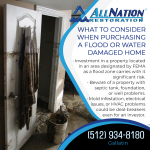All Nation Restoration realizes the benefits and risks of renovating a home needing water damage repair. The property damage restoration professionals at All Nation Restoration have the equipment, training, and techniques to repair water damage and mitigate mold issues. The restoration company provides property damage restoration services that are custom-fit to the client’s needs.
Water-Damaged Homes: An Opportunity for the Home Flipper
A flood-damaged property can be a profitable venture for the savvy home renovator. One investor took a chance on flood-damaged homes in the wake of a tropical storm that devastated a large swath of Southeast Texas. Distressed properties were purchased for 30 to 40 percent of their pre-storm value. After cleanup, restoration, replacements, and reconstruction, enough margin remained to justify the risk and hard work required to make the homes ready for market.
The most important element affecting the profitability of these homes is seller motivation. Many sellers want to offload their damaged property as soon as possible; others want to move out of the state quickly. Most have been through multiple tropical storms and had enough.
What to Consider When Purchasing a Flood- Or Water-Damaged Home
Value buys are readily available in areas hit by bands of strong thunderstorms, tropical storms, hurricanes, or tornados. A disaster may carry potential financial opportunities for the investor, but some challenges and risks are associated with taking on a house with severe water damage.
Tip #1: Investment in a property located in an area designated by FEMA as a flood zone carries with it significant risk.
FEMA, the Federal Emergency Management Agency, is the government agency tasked with determining natural disaster or FEMA areas. Most hard money lenders do not lend in FEMA areas. Investopedia provides the following definition for a hard money loan: “A hard money loan is a type of loan that is secured by real property. Hard money loans are considered loans of “last resort” or short-term bridge loans. These loans are primarily used in real estate transactions, with the lender generally being individuals or companies and not banks.”
Insurance premiums are high in FEMA areas, and the potential for future natural disasters is elevated in these FEMA areas. Both of these factors exert downward pressure on the actual value of the home and cause potential homeowners to think twice about purchasing a home with built-in overhead (the high insurance premiums) and the risk of a natural disaster damaging or destroying the house. A worst-case scenario would be a hurricane or tropical storm damaging the renovated home while it is on the market.
Tip #2: Beware of a property with septic tank, foundation, or well problems.
A flood, be it a local neighborhood flood or a raging creek overflowing its banks, has the potential to damage anything in its path. The National Weather Service refers to the Austin area as “flash flood alley.” Floodwaters can undermine the integrity of a home’s foundation. For the investor, the ability to secure a loan to finance the project may depend on the cost to remedy damages to the foundation, septic tank, or well. Remediation can be costly in terms of both time and money. In addition, an engineer’s report verifying the cost-to-cure may be required for the investor to obtain funding.
Tip #3: Mold infestation, electrical issues, or HVAC problems could be deal-breakers even for the savvy investor.
Water damage can lead to mold infestation if the flooded home is allowed to go without immediate water damage cleanup and restoration. Potential investors will definitely want to test for a mold infestation. The naked eye may not always be able to detect the presence of mold or the severity of the infestation. If mold is detected, it can be mitigated. If the cost-to-cure is less than around $5,000.00, funding for rehab should still be available at a reasonable interest rate. A verified remediation bid should be enough to satisfy lenders.
Wiring or outlets that have been submerged in floodwaters will probably need to be replaced. If it was submerged, the HVAC unit may only need a motor replacement. To be on the safe side, factor in replacing the unit, possibly including the ductwork and insulation. In combination, a mold infestation, electrical issues, and the need for a new HVAC unit may ward off potential lenders and may cut into margins so deeply that the home can no longer deliver a reasonable ROI.
Flood-damaged homes can be a great fix-and-flip opportunity for real estate investors. All Nation Restoration can provide the services needed to make the damaged home safe and clean.
To learn more about water damage restoration in Austin, TX, contact All Nation Restoration by phone at (512) 934-8180 or email info@AllNationRestoration.com.






















